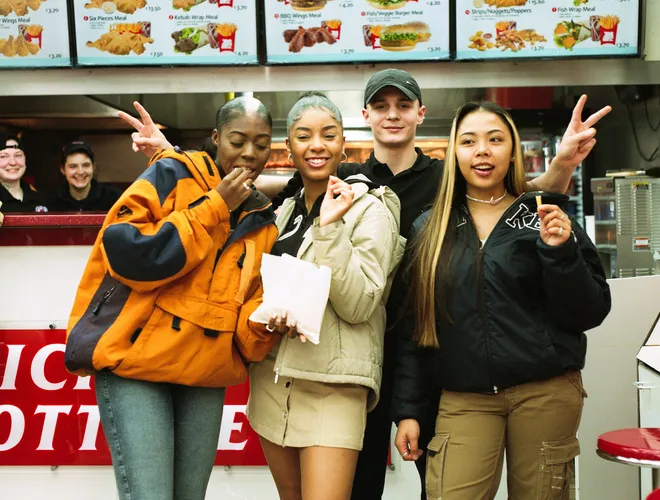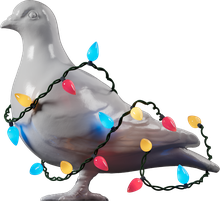Collecting Covid
Here’s how we rapidly collected over 600 objects and experiences to document the impact of Covid-19 on Londoners to create a comprehensive record for future generations.
In April 2020, we launched a rapid-response collecting programme to document the effects of Covid-19 on the capital. We wanted to be able to tell future generations what it was like to live in London during the pandemic. We were keen to collect experiences – good and bad – of a broad range of Londoners, as much as possible told in their own voices. We were after the tangible and intangible, the extraordinary and the everyday.
Contemporary collecting
The museum has long been acquiring objects related to current events. During the First World War, museum workers secured works of art , bomb casings and workwear worn by women who took on jobs traditionally done by men. More recently, in 2011–2012, we collected objects connected to the Occupy London movement and the London Olympics. In early 2020, we were two years into a contemporary collecting programme funded by Arts Council England. The Curating London team had collected and put on displays around themes such as Brexit, Youth Culture in West London and Dub.
Collecting the pandemic
With Collecting Covid, we wanted to continue the threads that had run through previous contemporary collecting projects:
- making the museum’s collection more representative of the diversity of London’s population
- collecting both physical and digital objects
- focusing on recording Londoners’ experiences in their own voices
- working in partnership with other organisations
We felt a sense of urgency because only in March 2019 the museum had closed a display about Disease X, the term introduced the previous year by the World Health Organisation to represent “the knowledge that a serious international epidemic could be caused by a pathogen currently unknown”. Preparing the display, we realised that we were short of objects documenting earlier pandemics.
What to collect?
Our main goal was to obtain enough objects to represent the very different experiences of Londoners living in the capital during the pandemic. We did not want to prompt people to make things, especially for us, such as writing a diary, but preferred objects that already existed.
Our focus was on these key themes:
- the effect of lockdown on London’s physical environment, but also the increasing time everyone spent online
- the experience of essential workers, but also working from home
- the effect on young people and children

A viral tweet we collected as part of this project.
Going viral: Tweets and dreams
Knowing that London’s street would not stay quiet forever, we quickly commissioned sound and film recordings of this unusual phenomenon. Social media became even more important during this period of isolation. We acquired 14 ‘viral’ tweets, shared or liked by at least 30,000 people. Our digital curator collaborated with the Canadian Museum of Dreams to record 20 Londoners recounting their pandemic dreams – or nightmares – several of which featured anxieties around masks. We asked five families to document their first Ramadan in lockdown.

A glass jar with ‘duas’ ('good deeds and words') written on paper by the Begum family during Ramadan 2020.
Asking the public to contribute
We also asked Londoners to email us with ideas. More than 500 people got in touch and we collected around 50 suggestions. Many proposed objects made to support the work of the National Health Service. Apart from many posters, we acquired a giant NHS sign from the giraffe house of the London Zoo, and one of three rattles made by a Londoner for himself and his grandchildren to make noise for health workers.

A homemade NHS support rattle made by the donor for himself and his grandchildren to use during the weekly ‘Clap for Carers’.
We took in diaries in various forms: traditional handwritten journals, blog posts and an Instagram story chronicling the first 50 days of lockdown. Many people turned to poetry to record their experience and we added several examples to our collection, something we do not normally consider. The public call-out delivered many objects relating to children and young people, including a rainbow picture painted by four-year-old Cerys complete with a Frozen sticker.
Collecting feelings
In the first months of 2021, we began to explore themes we had found difficult to represent such as absence, loneliness and bereavement. The art therapist of one London care home had invited its residents to shoot images of the virus with a paint gun. We acquired one gun, one of the paintings and photos of the residents at work.
For Telling Stories, we partnered with a hospice offering end-of-life care. In workshops, 10 people who had lost a loved one shared their experiences which were visualised by illustrator Olivia Twist.
In this project, we acquired more than 680 objects. Time will tell whether we managed to bring together enough variety to represent the many different experiences during the pandemic. Thank you to everyone who worked with us during this difficult time.
More in projects
-

Curating London
The Curating London project collected objects and stories from diverse London communities
-

Listening to London
How community-led research can enrich our Oral History collections with fresh interpretations
-

London Eats
How society, politics, economics and our disabilities influence the way Londoners connect with food
-

Collecting local histories
Over two years, we conducted community collecting projects engaging residents to document diverse local stories







